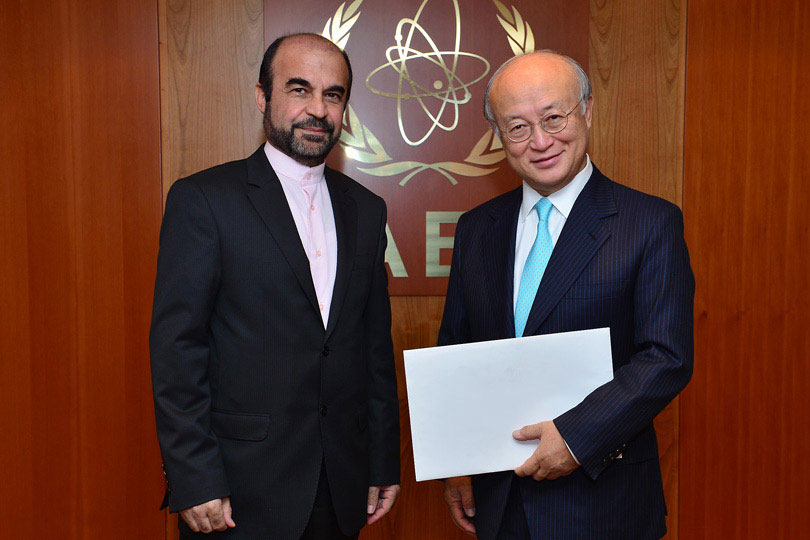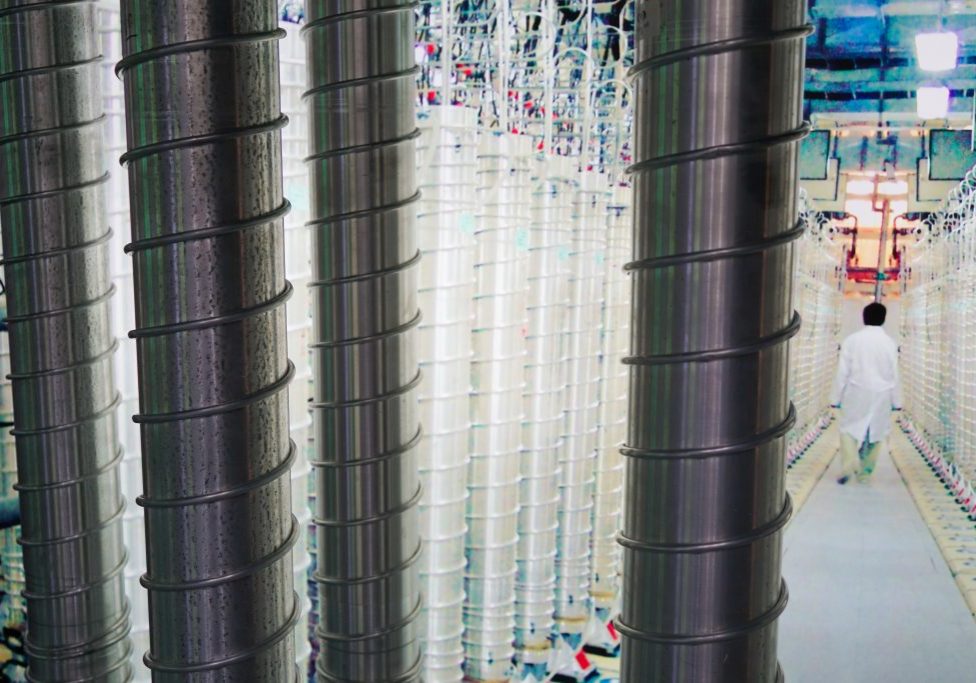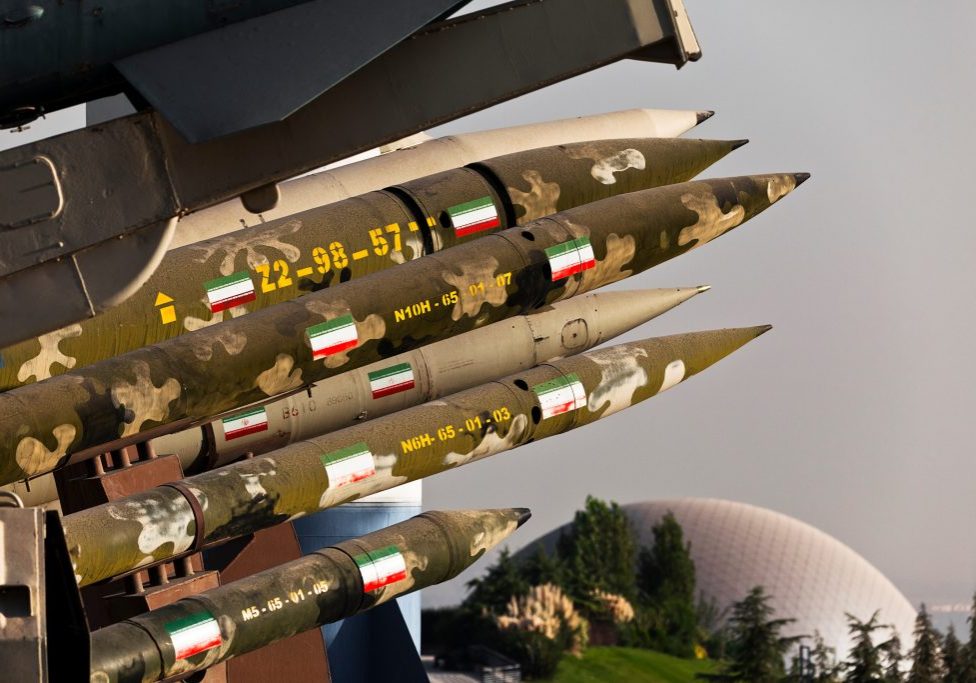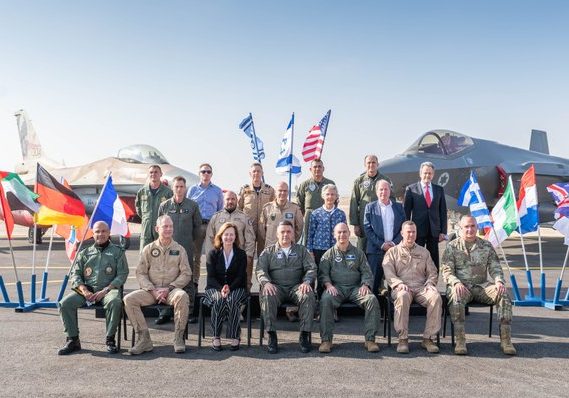Australia/Israel Review
Nuclear Knowledge?
Dec 17, 2015 | David Albright, Andrea Stricker & Serena Kelleher-Vergantini

David Albright, Andrea Stricker and Serena Kelleher-Vergantini
The International Atomic Energy Agency (IAEA) issued on December 2, 2015 a long awaited report on its investigation into the possible military dimensions (PMD) to Iran’s nuclear program under the IAEA/Iran Roadmap to resolving these issues. The completion of the Roadmap process and issuing of this report is linked, in the Joint Comprehensive Plan of Action (JCPOA) [Ed. Note: the nuclear deal between Iran and the “P5+1” states reached in July] to Implementation Day. The JCPOA explicitly requires Iran to complete a set of agreed upon Roadmap steps with the IAEA prior to Adoption Day, which fell in mid-October 2015, and well before Implementation Day. The Roadmap stated that by mid-December the IAEA would issue a final assessment on these issues.
Overall, the report is evenhanded, albeit highly abbreviated in its assessments about Iran’s nuclear weapons activities. It draws conclusions in the limited areas it is able to do so. However, Iran did not provide the IAEA with anywhere near a full declaration about its past nuclear weapons related activities, and it did not provide the kind of transparency and cooperation required for the IAEA to conclude its investigation. The IAEA was unable to fully explain Iran’s nuclear weapons activities, including assessing with certainty that each activity and the program overall have ceased to exist. Most of its conclusions were based on incomplete information rather than a full Iranian declaration or cooperation.
Iran’s answers and explanations for many of the IAEA’s concerns were, at best, partial, but overall, obfuscating and stonewalling. Faced with evidence, Iran offered largely civilian or conventional (non-nuclear) military justifications for many of the outstanding issues of concern, denied the activities’ relation to nuclear weapons work, or denied the activities or evidence outright. In many cases its answers appeared contrived. In no single case did Iran admit to the central conclusion reached by the IAEA in the report or by the United States and several other governments – that it had a structured nuclear weapons program prior to 2003 and a limited effort afterwards. It did not explain how the activities of concern related to this program. It also did not allow the IAEA to interview key scientists and other people of interest associated with the program. Needed access to sites was either denied or tightly controlled as to preclude adequate inspections.
Faced with such outright Iranian efforts to deceive the inspectors, the IAEA broke relatively little new ground in its report. It is a testament to the IAEA’s perseverance on this issue that it was able to make the conclusions that it did.
In a new revelation, the IAEA stated that its evidence of nuclear-weapons efforts extended to 2009. On one side, it stated that it had no credible evidence of nuclear weapons-related work after that year, but on the other, the IAEA was also unable to conclude with certainty that the program ended in 2009. Thus, the best that can be said is that the program continued to at least 2009. This revelation refutes the unclassified 2007 US National Intelligence Estimate (NIE) which assessed that Iran’s nuclear weapons program was halted in the fall of 2003, and that Iran had not restarted this program as of mid-2007. The IAEA’s finding is more in line with the assessments of Britain, France, Germany, and Israel, which stated that nuclear weapons related activities continued after 2003. This IAEA finding also shows that Iranian Government claims of a fatwa against nuclear weapons is more for outward show.
Iran’s cooperation was certainly not sufficient to close the overall PMD file. Consequently, the IAEA’s report can be viewed, at best, as a document that closes the process set forth by terms of the Roadmap. However, the IAEA’s investigation must continue. As Olli Heinonen, Senior Fellow at the Belfer Center at Harvard University, wrote on December 8, 2015:
The upcoming IAEA Board of Governors meeting should pass a resolution re-affirming the IAEA’s mandate and authority to continue its investigation into Iran’s work on nuclear weapons. It should emphasise that the IAEA is still not in a position to provide assurances on the strictly peaceful nature of Iran’s nuclear program. The resolution should state that Iran should provide a full declaration of its past efforts and cooperate on further investigatory efforts by the IAEA into its past nuclear weapons related activities. It should state that the IAEA has the authority to visit sites, take in-person samples, and interview persons of concern.
Given the lack of any real Iranian cooperation, further progress on this issue should be required prior to Implementation Day. Sanctions relief should be conditioned on obtaining a certain amount of cooperation that furthers progress.
The resolution should also affirm that regardless of the status of this investigation up to Implementation Day, the investigation into Iran’s past nuclear weapons activities must continue in the years ahead as the IAEA seeks to reach a broader conclusion under Additional Protocol. As Heinonen states, as the IAEA seeks a broader conclusion, “… A comprehensive understanding of the Iranian nuclear program’s weaponisation related activities is essential to set up credible baselines against which to monitor and detect any reconstitution efforts.” To that end, denial of access in the future relating to continued IAEA efforts would be justification for the P5+1 to invoke the JCPOA’s access provision.
Finally, a full conclusion to the possible military dimensions to Iran’s program must include an Iranian statement that the effort existed and will not continue. Former Iranian President Rafsanjani recently went part of the way by admitting as much to an Iranian news source. However, Iranian Ambassador to the IAEA Reza Najafi appeared to deny agreement with the IAEA’s findings about its activities and promised a report by Iran responding to the findings of the IAEA report. It is time for the Iranian regime to officially admit that it had a nuclear weapons program and pledge that it has officially abandoned any such effort.
The IAEA’s Overall Assessment
Following are the major conclusions reached by the IAEA during its Roadmap investigation:
Major Finding 1: “The Agency assesses that a range of activities relevant to the development of a nuclear explosive device were conducted in Iran prior to the end of 2003 as a coordinated effort, and some activities took place after 2003. The Agency also assesses that these activities did not advance beyond feasibility and scientific studies, and the acquisition of certain relevant technical competences and capabilities. The Agency has no credible indications of activities in Iran relevant to the development of a nuclear explosive device after 2009.”
Major Finding 2: “Based on all the information available to the Agency, including from the particular verification activities specified under the Framework for Cooperation (including the managed access to the Gchine mine) and the JPA [JCPOA], the Agency has not found indications of an undeclared nuclear fuel cycle in Iran, beyond those activities declared retrospectively by Iran. The Agency assesses that any quantity of nuclear material that may have been available to Iran under the AMAD Plan [Ed: an initiative by Iran to consolidate the efforts of its weaponisation scientists] would have been within the uncertainties associated with nuclear material accountancy and related measurements.”
Institute for Science and International Security analysis
Major Finding 1: The IAEA’s findings about the existence of a structured nuclear weapons program prior to 2003 and that it continued in a dispersed fashion after 2003 support earlier findings of the IAEA and non-US intelligence agencies. The finding that the activities did not advance beyond feasibility and scientific studies and the acquisition of certain competencies and capabilities is in line with earlier IAEA assessments. However, it should be pointed out that Iran learned enough in its pre-2003 efforts to be able to make a crude fission weapon from weapons-grade uranium, as the IAEA assessed earlier. The finding that Iran knows how to make a crude nuclear weapon, and honed some of its nuclear weapons development skills after 2003, should temper statements that Iran’s active nuclear weapons efforts may have ended. Its existing knowledge will not disappear, and a revived nuclear weapons effort could rapidly progress to the building of nuclear weapons, if it obtained sufficient weapons-grade uranium.
A sobering concern is that the investigation, even though incomplete, shows that the building of at least crude fission nuclear weapons is not a bottleneck in Iran’s acquisition of nuclear weapons. Mitigating this threat requires a much deeper understanding of Iran’s progress on nuclear weapons and greater assurances than have so far been given that these efforts have stopped.
The evidence does not allow a conclusion that Iran’s nuclear weapons efforts ended in 2009, but notably the year 2009 coincides with the revelation of and then confirmed re-purposing of the Fordow enrichment facility. In September 2009, the United States, France and Britain publicly revealed the existence of the then-secret Fordow enrichment facility. IAEA evidence supported the assessment that this enrichment site was part of an on-going secret nuclear weapons effort. The rapid modifications made at the site and its original nature (small, deeply buried, and unable to handle large natural uranium feed cylinders) pointed to a plant designed to make weapons-grade uranium.
After the plant was revealed, Iran extensively modified the insides of the plant and declared that the site would produce low enriched uranium under safeguards. The revelation of the advanced construction of a secret centrifuge plant was highly embarrassing to Iran and shifted international opinion significantly against it. As in 2003, faced with the risk of further disclosures, Iran may have decided to close down any remaining nuclear weapons related work.
However, whether Iran actually has closed down all of its nuclear weapons related activities remains uncertain, given its poor level of cooperation with the IAEA, including the absence of any official admission of its past efforts. Some of its activities may continue in highly secret facilities or be actively retained for later use. When a country lies so often, as Iran has done on the nuclear issues, prudence requires continued pressure to reveal what it did and assessments that must assume the worst about its capabilities.
Major Finding 2: The finding on undeclared fuel cycles, in particular explicitly military fuel cycles run in parallel to secret ones of the Atomic Energy Organisation of Iran, is difficult to assess. The IAEA does not state what Iran has admitted in this area. Nonetheless, the issue of whether Iran had a parallel military fuel cycle is not directly addressed. Any such fuel cycle would have existed prior to 2003 and the AMAD program. In the late 1980s and 1990s, this parallel program would have been located at the Physics Research Centre (PHRC). The evidence, part of which is contained in about 1,500 telexes related to PHRC procurement efforts, supports that Iran’s military was pursuing a range of fuel cycle activities, including development of gas centrifuges. Earlier, inspectors found indications that this program had at least one facility to develop centrifuges separate from those of the Atomic Energy Organisation of Iran, which were then taking place secretly at the Teheran Nuclear Research Centre. If this military program enriched any uranium, it would have involved extremely small quantities. Nonetheless, determining the extent of the PHRC’s centrifuge and possible nuclear weaponisation activities should remain a priority.
Conclusion
The IAEA’s report closes the investigation set forth by the Roadmap. It should not be considered a report that closes the overall PMD file. It is important that the investigation into many of the issues contained in the overall PMD file continues.
Whether Iran has actually closed down all of its nuclear weapons related activities, let alone dismantled and destroyed all aspects of that work, is uncertain given its poor level of cooperation with the IAEA, including the absence of any admission of its past efforts and denial of the facts and findings in the report. Some of its activities may continue in highly secret facilities or its nuclear weapons accomplishments may be retained for later use. Absence of IAEA assurance about this, due to the lack of Iran’s full disclosure about its PMD activities, is further reason that the IAEA’s investigation must continue.
Lack of full knowledge of Iran’s nuclear weapons related activities will hamper verification efforts relating to the JCPOA and the IAEA’s effort to reach a broader conclusion. Sanctions relief under the JCPOA Implementation Day should be conditioned on some amount of additional cooperation from Iran on this investigation. Allowing the possible military dimensions investigation to close would set a poor nonproliferation precedent well into the future. We strongly urge the IAEA Board of Governors to direct a continuation of the investigation.
Dr. David Albright, a physicist, is founder and President of the non-profit Institute for Science and International Security (ISIS) in Washington, DC and a former United Nations IAEA nuclear inspector who worked on the Iraqi nuclear program. Andrea Stricker and Serena Kelleher-Vergantini are respectively a Senior Policy Analyst and a Research Analyst at ISIS. The above is excerpted from a longer ISIS report, which can be read on the ISIS website, isis-online.org. © Institute for Science and International Security, reprinted by permission, all rights reserved.
Tags: International Security






